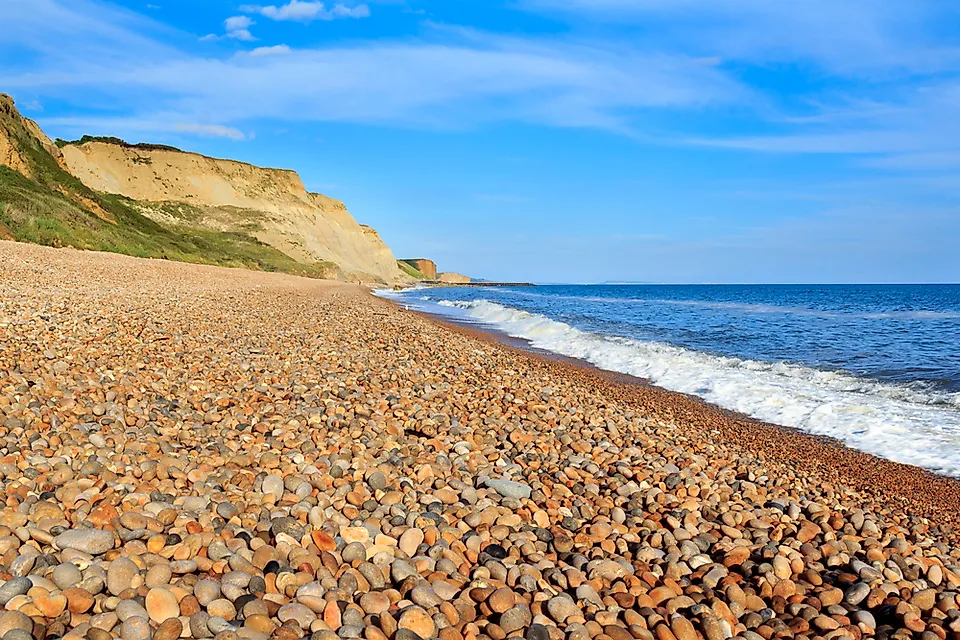What Is a Shingle Beach?

The term shingle beach refers to a beach along any body of water that is made up of stones, pebbles, and other small rocks. These materials, also known as shingles, may vary in size from 2 to 200 millimeters and can also be mixed with other sediments, like sand or silt. Shingle beaches are primarily characterized by a steep profile, which means the area further inland sits at a higher elevation than the section of the beach found along the water. These beaches are located along a number of geological formations, including spits, barrier islands, and pocket beaches. Since the stones and pebbles that make up these beaches do not fit tightly together, they create a rather porous environment. These large pores prevent the beach from retaining any significant amount of water, although they also prevent evaporation in the soil below. Many shingle beaches can be found in New Zealand, Japan, and the United Kingdom.
How Is a Shingle Beach Formed?
Geologists have linked the formation of many shingle beaches to areas around the world that were subjected to glaciation during the Pleistocene era. These areas tend to be located at higher latitudes, and glaciers brought with them rocks and pebbles that were deposited on the shorelines. Sometimes the rocks and pebbles on shingle beaches are deposited by rivers that empty into the ocean. Additionally, shingle beaches may be formed from intense wave activity that erodes larger pieces of rock located further inland. Over time, continued wave activity carries these large pieces of sediment onto the shores, depositing the biggest pieces further from the water and at higher elevations. The composition of these beaches works to decrease the strength of the tide as it moves back out to the ocean.
Ecology of Shingle Beaches
The inhospitable environment of shingle beaches does not promote any significant plant growth. This lack of vegetation is largely due to the constant movement of the top layer of shingles and the lack of permanent topsoil. Without topsoil and a stable ground, seeds are unable to root on a shingle beach. Some exceptions have been discovered, however. The Culbin shingle beach in Europe is one such example due to the presence of shrub plant species. A few other plant species may also be found in shingle beaches, including sea kale, sea campion, and sea beet. Each of these plants are resistant to the high concentration of salt in the water along shingle beaches. Other common shingle beach plants are lichens, which are typically seen growing along the largest rocks at the highest elevations of these beaches, where the rocks are not frequently moved by strong waves. A number of small animal species inhabit these lichen-covered rocks. Ant, bee, and moth species tend to be the most commonly sighted. Additionally, several endangered species rely on these habitats.
Threats to Shingle Beaches
One of the biggest environmental threats to shingle beaches is the ever-increasing sea level. Higher and stronger waves threaten to erode these beaches, allowing ocean water to move further inland. The lichen plant species covering these rocks mean that these beaches are more susceptible to erosion because of the shallow root systems of the plants growing on shingle beaches.











